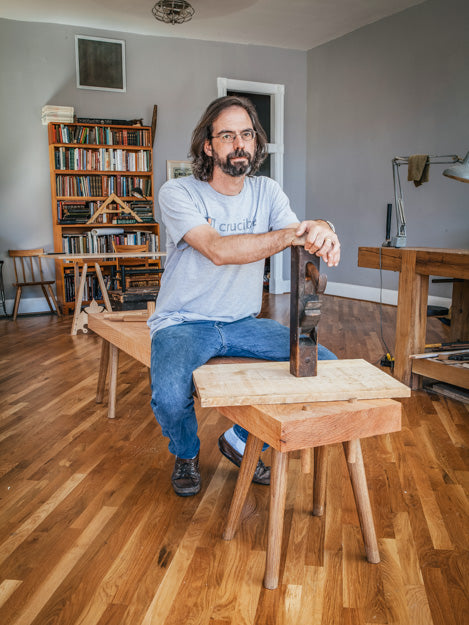
In my mind, one of the most interesting bits of woodworking research to crop up in the last few years has been Chris Schwarz’s journey into “Roman” workbenches. If you’ve been following along at his blog, you’ll remember he built two different variations. One of which is a based on a 16th century plate and is essentially the precursor to the modern workbench. It’s funky looking but pretty familiar in function to modern woodworkers. It’s the other bench that has grabbed my full attention because it is so different to the way we work today.
This second workbench he built is based on illustration of ancient Roman workworkers. Besides the fact that it has 8 “staked” legs, it is so different in function because it is knee-high and has no working holding devices beside a few wooden pegs. What’s amazing to me about this fact is that this form actually continued to be in use into the 19th century in rural areas around the globe. In fact, even my research on Jonathan Fisher testifies to this. His four legged “Roman” bench survives in the museum to this day.
Chris is working on a book about these two benches now but because he’s printing it via letterpress without any photographs, we both agreed that M&T readers would like to see this thing in action. In this article, Chris will show the efficiency of using this bench in today’s work. How do you plane faces on a bench so low? Or what about edge planing? Chopping mortises without a vise? Cutting joinery?
I’m honored to be publishing this article from Chris. I truly believe this bench form will make a measurable comeback thanks to his bold exploration. I know I’m planning mine.

